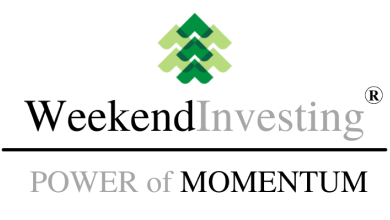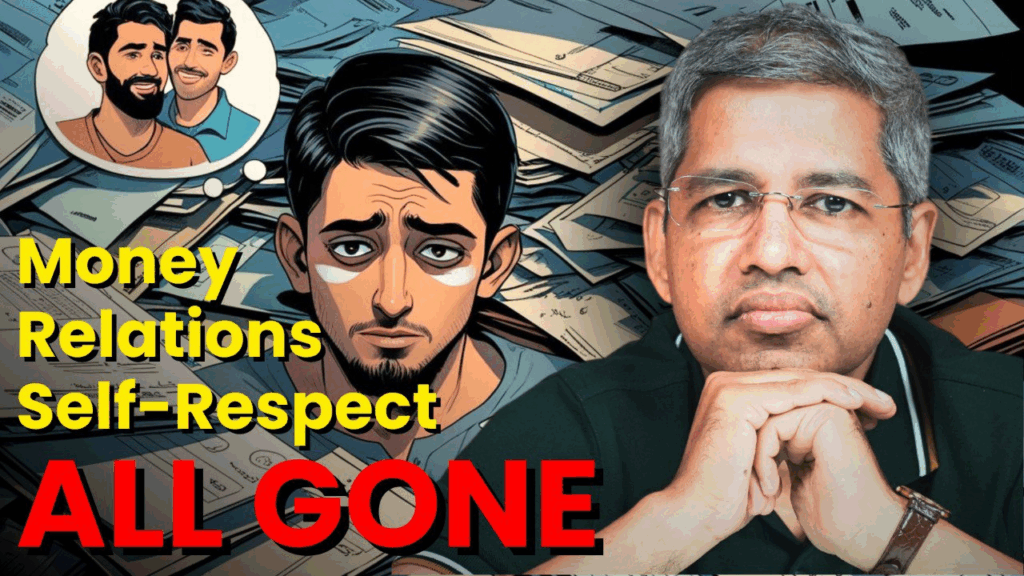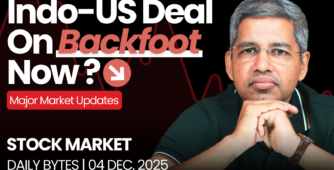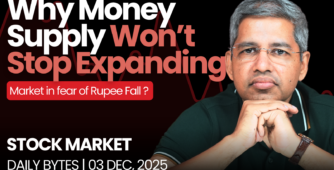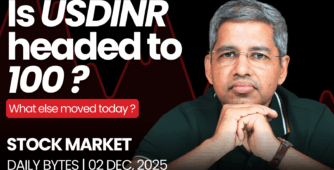Where is the market headed?
It was a very quiet day, with markets largely absorbing recent earnings and India’s low inflation figures from the past couple of days, while awaiting clarity on the tariff front. There were no clear cues or triggers to push the market meaningfully up or down. The recent decline in previous sessions has also not resulted in a continued downside, which is a positive sign.
Market Overview
Nifty closed 0.06% higher from yesterday, largely holding steady as the market waits for fresh news or inflows to trigger a move. Trading around 25,200, the current range between 24,500–25,500 seems healthy. Considering the market has rallied nearly 20% from 21,600 in just three months, some consolidation and absorption of those gains appears both natural and positive for overall stability.
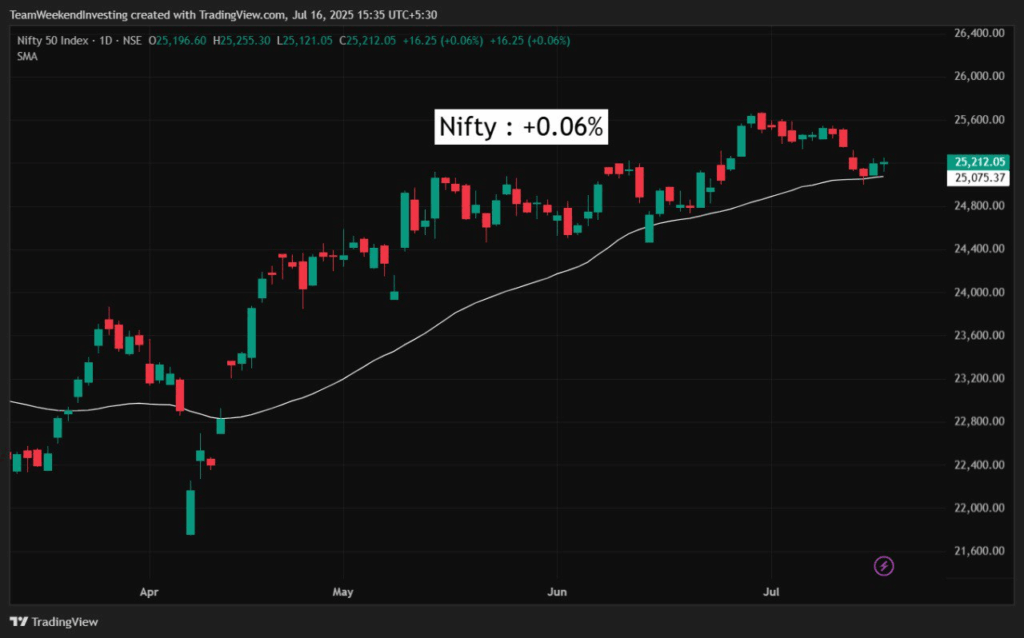
Nifty Next 50
Nifty Junior, however, moved up slightly by 0.21% and is now trading close to its recent all-time highs.
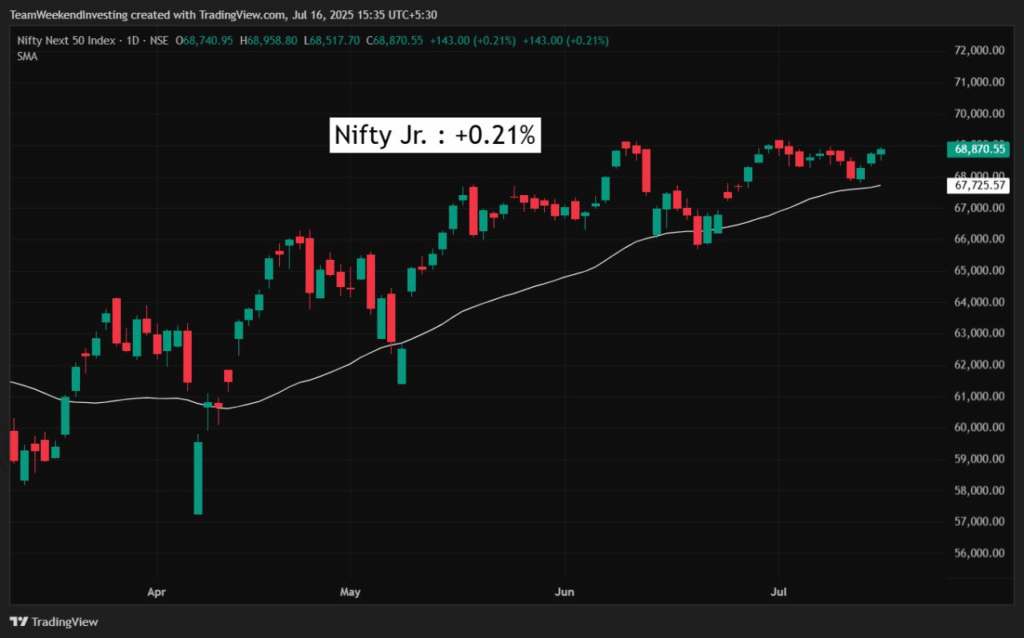
Nifty Mid and Small Cap
The mid-cap space remained largely flat, up just 0.1%, while small caps edged up 0.17%, gradually inching higher. There is clearly a stronger undercurrent in the broader market compared to large caps.
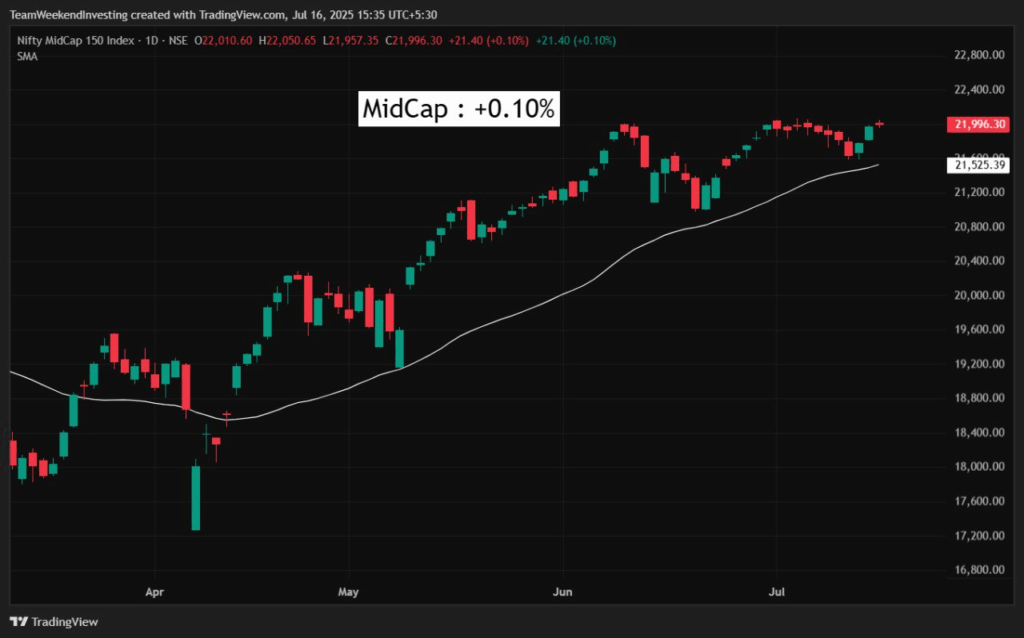
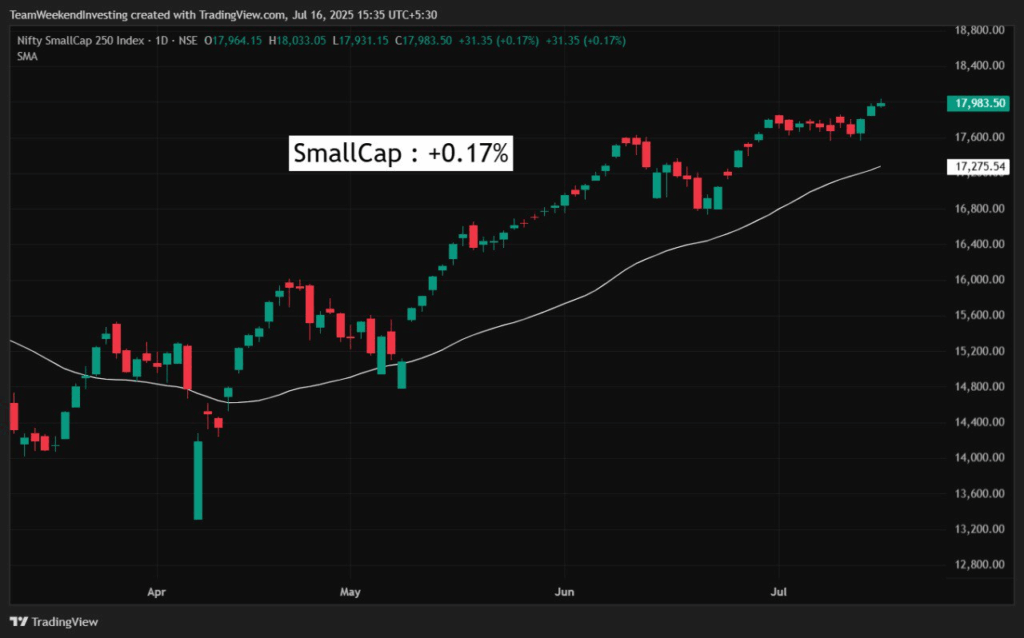
Bank Nifty
Nifty Bank also closed up 0.28%, holding steadily within its comfort zone. It continues to maintain a range between 56,000 on the downside and 58,000 on the upside, showing stable movement within this band.
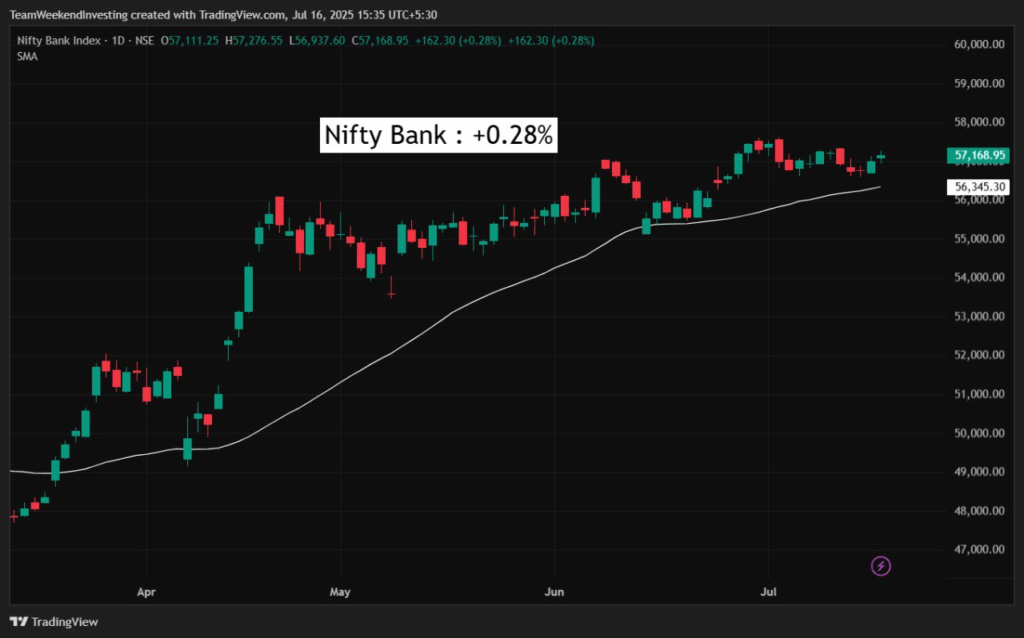
GOLD
Gold is up nearly 0.5%, currently at ₹9,778 per gram.
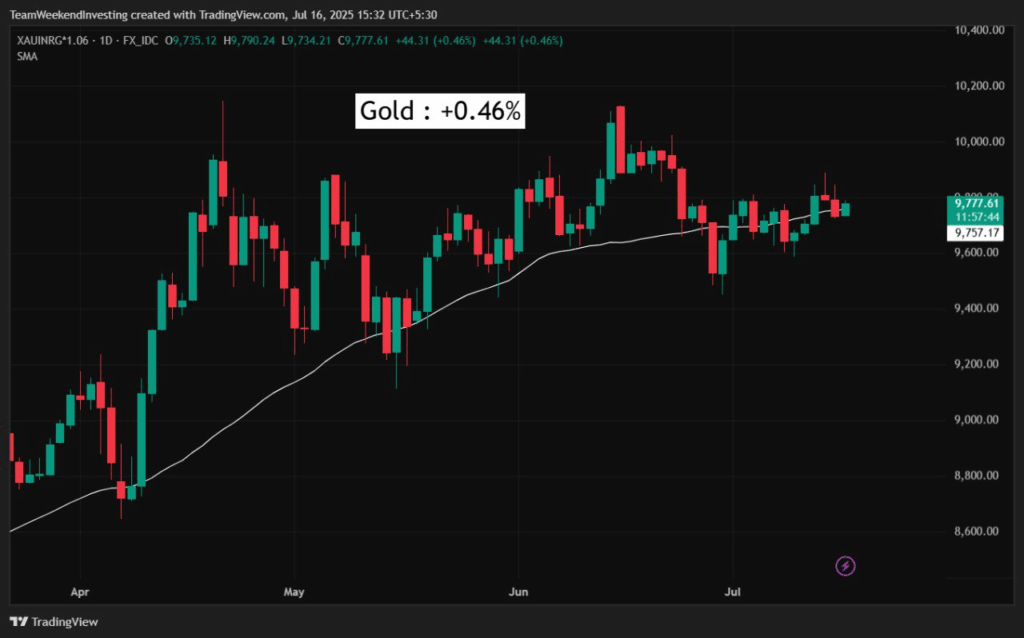
Advance Decline Ratio
The advance-decline ratio remained very flat, closing at 266 advances to 233 declines.
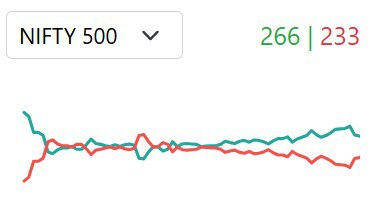
Heat Maps
In the large-cap Nifty space, State Bank of India rose 1.87%, with background discussions around PSU bank consolidation likely driving interest in some PSU stocks. Among IT stocks, Tech Mahindra and Wipro performed well. Mahindra & Mahindra also gained 2%, amidst talk of Tesla’s entry into India; however, with Tesla’s starting price around ₹70 lakh and Mahindra’s models priced between ₹15–30 lakh, there appears to be no direct competition.
Nestle India rose 1.8%, while Asian Paints added 0.7%. HDFC Bank announced its first bonus issue in 30 years along with a strong dividend, yet the stock remained unmoved, which stood out.
In the Nifty Next 50, there was more green, with PNB, Bank of Baroda, and Canara Bank moving up, reflecting the ongoing PSU banking activity. While final consolidation details remain unclear, multiple merger combinations are being speculated.
Among notable declines were Shriram Finance, Siemens, Hyundai, HAL, Naukri, Vedanta, and Jindal Steel. On the positive side, Dmart was up 1.5%, and Tata Power gained a solid 2.67%.
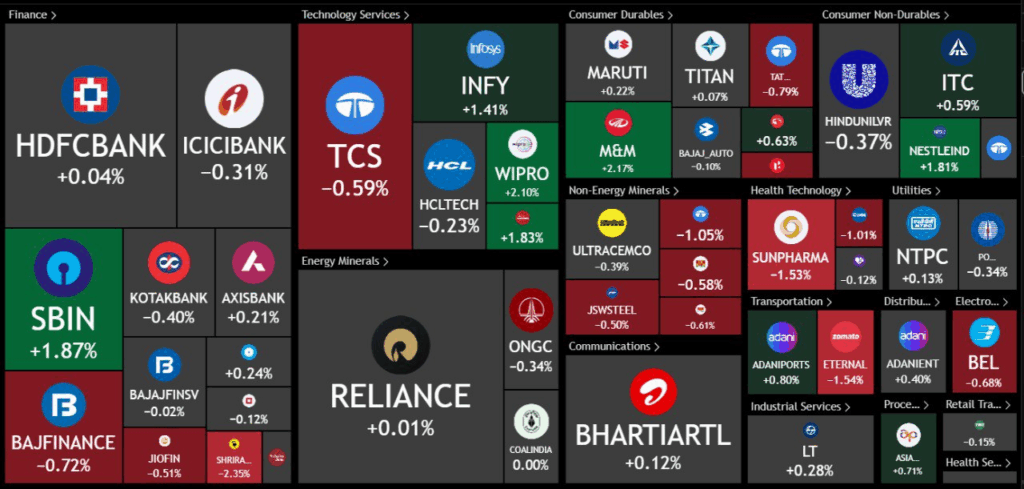
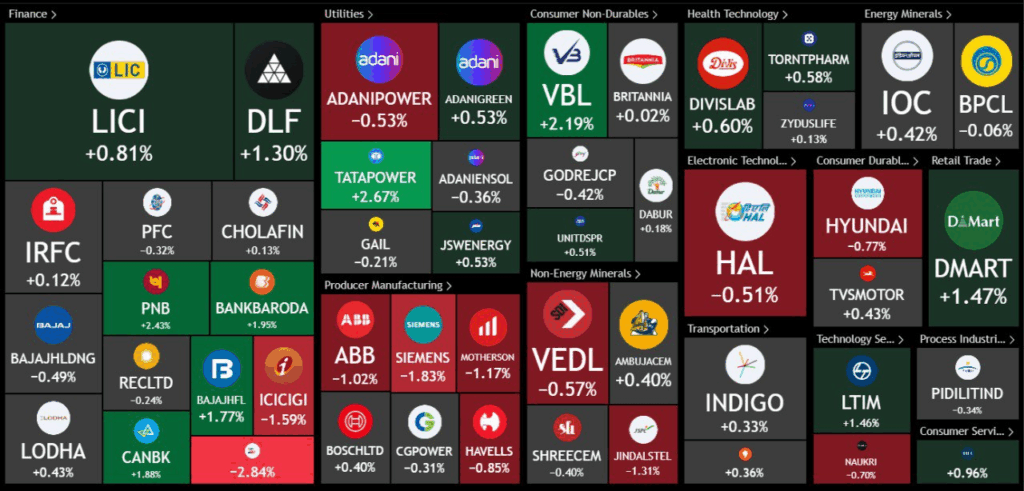
Sectoral Overview
PSU banks led sectoral gains today, rising 1.8%. Looking at their performance across timeframes:
- Over one week, PSU banks are up 2.4%.
- In the past month, they have gained 4.5%.
- Over three months, they are up 13%, and in the last six months, 15%.
- On a one-year basis, PSU banks have been largely flat, but signs of a comeback are becoming visible.
The Capital Market Sector has performed well recently, although it was somewhat subdued today. Apart from PSU banks, the Media, IT, and Tourism sectors each saw gains of more than 0.5%, contributing positively to the overall market sentiment.
There was limited downside in today’s session. Defense stocks declined by 0.4%, while Metals were down 0.5%. No other sectors saw meaningful losses, reflecting a broadly steady market environment.
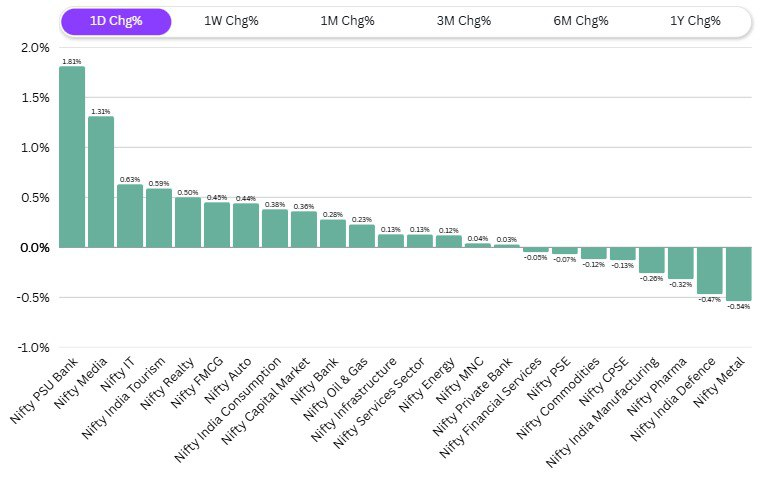
Sector of the Day
Nifty PSU Bank Index
In the PSU banking space, stocks such as PNB, IOB, Punjab & Sind Bank, UCO Bank, and Bank of Baroda all performed well today. The PSU Bank Index chart itself appears strong, showing signs of a possible cup-and-handle continuation pattern.
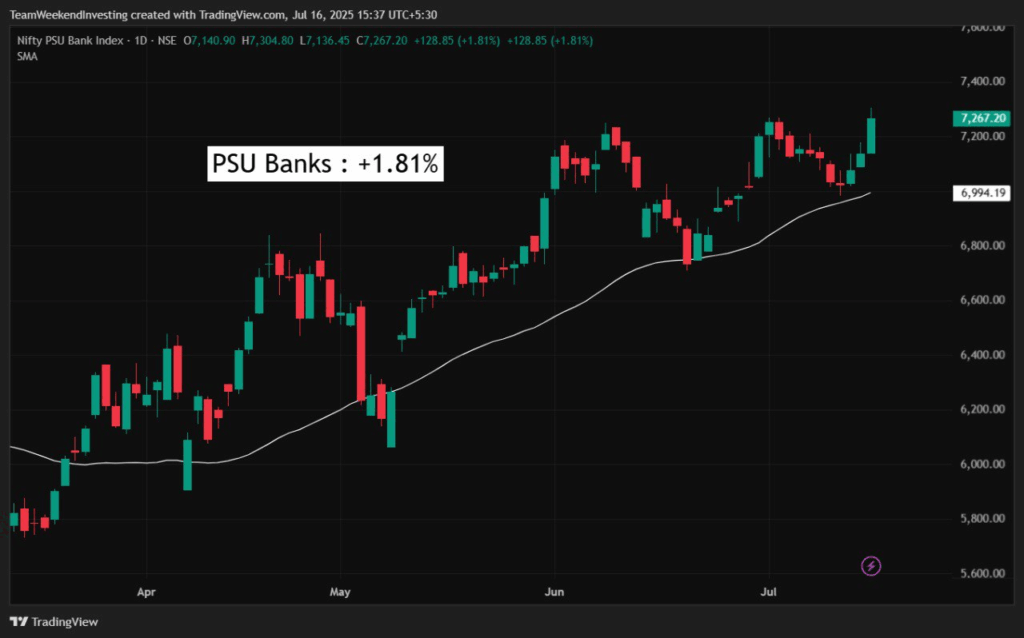
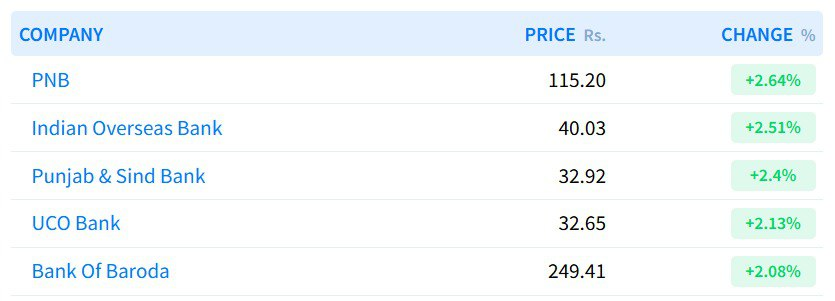
Story of the Day: How EMI On Personal Loan Can Trap You
The personal loan trap and risks of informal borrowing are issues widely understood, yet hearing a fresh perspective can sometimes change one’s mindset for the better. This is a topic that affects many, especially in today’s environment where personal loans are easily accessible. Phone calls, emails, WhatsApp messages, and relationship managers constantly offer credit, provided creditworthiness exists. Quick access to funds is available for needs like medical emergencies, weddings, travel, and debt consolidation. Borrowing is almost always an option unless the credit rating is severely damaged, but the interest rates and repayment conditions must be considered carefully.
The EMI trap is a genuine concern for economists, as high interest rates and rigid repayment schedules can lead EMIs to consume a large portion of monthly income. As of June 2025, the average rate of personal loans is 26.5%, according to Investopedia. (see the image below)
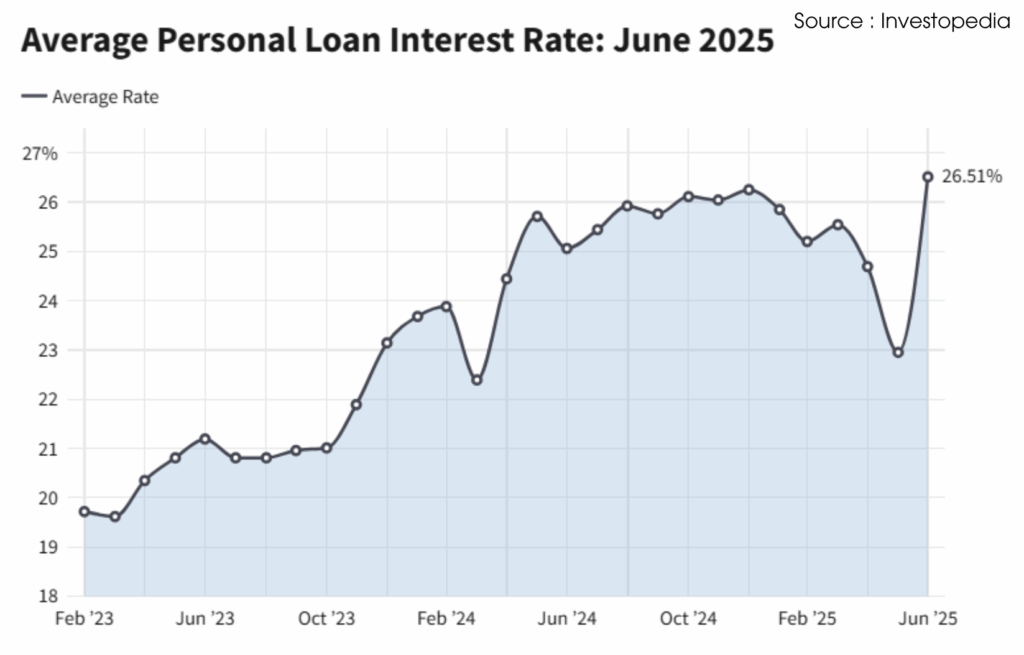
A significant share of take-home disposable income goes towards home EMIs, car EMIs, and similar payments, with this percentage continuing to grow, making it difficult for individuals to manage finances effectively.
Since the period from 2000 to 2008, credit growth had not been rising, but post-COVID, credit growth accelerated dramatically. (see the image below)
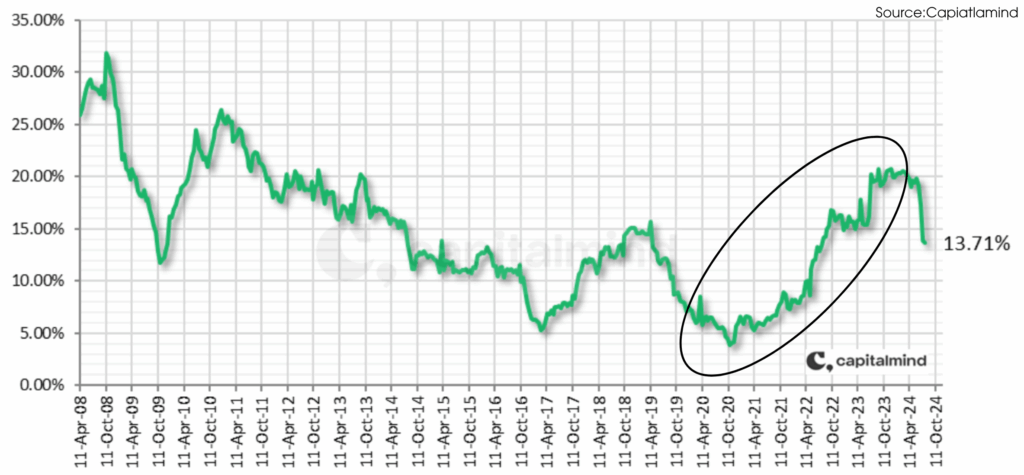
While it has recently eased slightly, it remains at elevated levels. Total credit to unsecured personal loans is growing at an exponential pace. (see the image below)
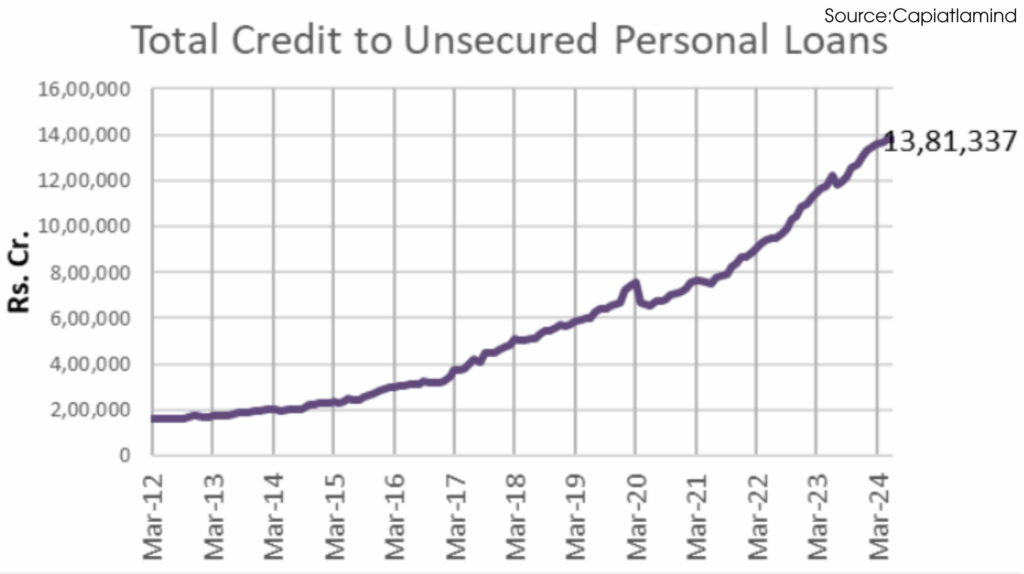
The curve is steepening further, possibly due to job losses and business closures during COVID, which never fully recovered. Larger companies with better technology consolidated market share, leaving smaller business owners and entrepreneurs struggling.
Data compiled by regulatory bodies shows that small-ticket fintech personal loans are increasingly overdue, with overdue rates reaching their highest level in six quarters. Stress is notably visible in tier-three cities and rural areas, especially among borrowers under 25 years old. Whether these young borrowers use funds for essentials or for gambling, borrowing is easily available.
When conventional borrowing options are exhausted, particularly for younger individuals without a credit history, borrowing from friends or family becomes a fallback. The perceived advantages include no interest, flexible repayment terms, no documentation, and quick access to funds. However, while this appears convenient, serious risks are involved. Straining relationships is one major danger. Repayment delays can cause resentment, misunderstandings over interest expectations, and can eventually lead to breakdowns in friendships or family ties. Differing expectations—such as assuming the borrower will offer interest or repaying earlier than planned—can create awkwardness and tension.
The long-standing personal approach suggests never mixing business with friendships or family ties. Avoid borrowing money, offering business, or soliciting recommendations from friends or relatives. Keeping business and relationships in separate silos prevents disappointment and relationship breakdowns. Mixing the two often results in ruined relationships, especially if something goes wrong, which in business or lending, can easily happen.
Informal borrowing can also lead to a cycle of dependency. For example, one individual borrowed from one friend, then another three months later, and continued borrowing from others until every friend had been approached. This dependency cycle made it impossible for the person to fix their finances, relying instead on easy availability of money from friends. Borrowers may not realise their lenders have their own financial needs. Lending out money and not getting it back can put the lender in a difficult situation, leading to further strain in the relationship.
Breaking the cycle requires identifying areas to cut costs. Ensuring income covers both expenses and borrowings requires belt-tightening where necessary. Relying on others to fill financial gaps is not sustainable. Options like EMI restructuring or partial payments can also help. In one instance, a person with loans worth ₹40–50 lakhs was advised to downsize from a three-bedroom house worth ₹1.5 crores to a more affordable option, freeing up liquidity. However, making such decisions is difficult and was ultimately avoided, despite the financial logic.
Boosting income through side hustles, freelancing, or part-time jobs can provide relief. Even an additional 5–10% monthly income can help exit the debt cycle. Expert guidance on debt management and financial planning is crucial. Many individuals struggle with credit card debts that charge interest rates as high as 36% per annum. Maxing out multiple credit cards creates a situation that is extremely difficult to recover from without consolidation or financial advice.
Communication with lenders, debt consolidation, budget reviews, and increasing income are all valid steps. However, maintaining good financial habits is often overlooked. Developing the discipline to live within one’s means and planning debt reduction is essential. This issue does not only affect young people; even middle-aged individuals struggle with excessive EMIs due to buying houses or cars beyond their financial capacity. That is often where the trouble begins.
Borrowing from friends or family simply because loan payments are high is not advisable. Informal borrowing should only be considered if there is a very short-term gap and a clear vision of repayment within a defined period. Without that certainty, informal borrowing is a bad idea. It does not solve financial problems and instead creates new issues—financial, emotional, and relational. Instead, one should speak to lenders, create a budget, and explore formal financial restructuring options. Tightening personal finances protects both peace of mind and valued relationships.
For those feeling stressed about loan repayments, reviewing these points and taking measured actions is essential. A helpful video on five habits for wealth creation is also available for further insights.
